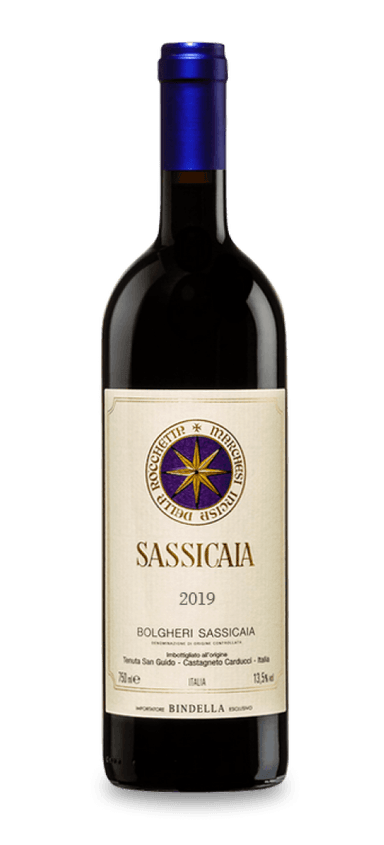- Home/
- Wine Directory/
- Italy/
- Tuscany/
- 2019 Sassicaia, Tenuta San Guido, Bolgheri
2019 Sassicaia, Tenuta San Guido, Bolgheri
750ml - Tuscany, ItalyCritic Scores
Market Data
| Date | Price | Quanity | Platform |
|---|
No Recent Sales Data
The estimated market price factors in data from multiple sources; however, the transaction history shown here reflects sales completed on the Vinovest platform only. Additional transaction data from other marketplaces will be available in future updates.
Where is my wine stored?
Rest easy knowing your wine is in expert hands. We take care of all the storage and handling details for you. Plus, you're always welcome to come by and check out your wine in person.



- Secure Storage
- 100% Insurance
- Legal Protection
Conditions Standards & Authentication
Condition Standards
- All bottles are inspected for label and cork condition
- Fill levels are verified and documented
- Stored in temperature and humidity controlled facilities
- Original packaging preserved when available
- Professional handling and transport protocols
- Condition notes provided for each lot
Authentication Process
- Source Verification
All assets traced to verified sources
- Expert Authentication
Professional assessment and verification
- Secure Storage
Professional facility with full insurance
- Platform Listing
Available for verified investment
About This Wine
Sassicaia is the original Super Tuscan, debuting in 1968. Its seminal release was far from spontaneous, though. Tenuta San Guido had refined the red blend for more than four decades in pursuit of the ultimate thoroughbred wine. So, what did critics originally think? Meh. Since light, local wines were customary, the complexity of Sassicaia was beyond comprehension. Time has been much kinder to Sassicaia. Today, it’s considered one of the essential Tuscan wines with its exceptional balance, nuanced personality, and entrancing aromas. The 2019 vintage offers a classical interpretation with notes of red berries, tobacco, dried herbs, cedar, olive, and earthiness. Multiple wine critics have awarded it a 100-point rating, with James Suckling comparing it to the legendary vintages of 1982 and 1988. With its 0.75 price-to-score correlation, Sassicaia should be on any investor’s shortlist. The Final Sip: The original Super Tuscans sparked a revolution and inspired generations of winemakers and consumers.



